Italian sofrito (or soffritto) is a classic aromatic base used to build deep flavor in countless dishes, from soups to sauces. Made with finely chopped onions, carrots, and celery, it is gently sautéed in olive oil until tender and fragrant. This simple yet essential mixture lays the foundation for many traditional Italian recipes, adding richness and complexity.
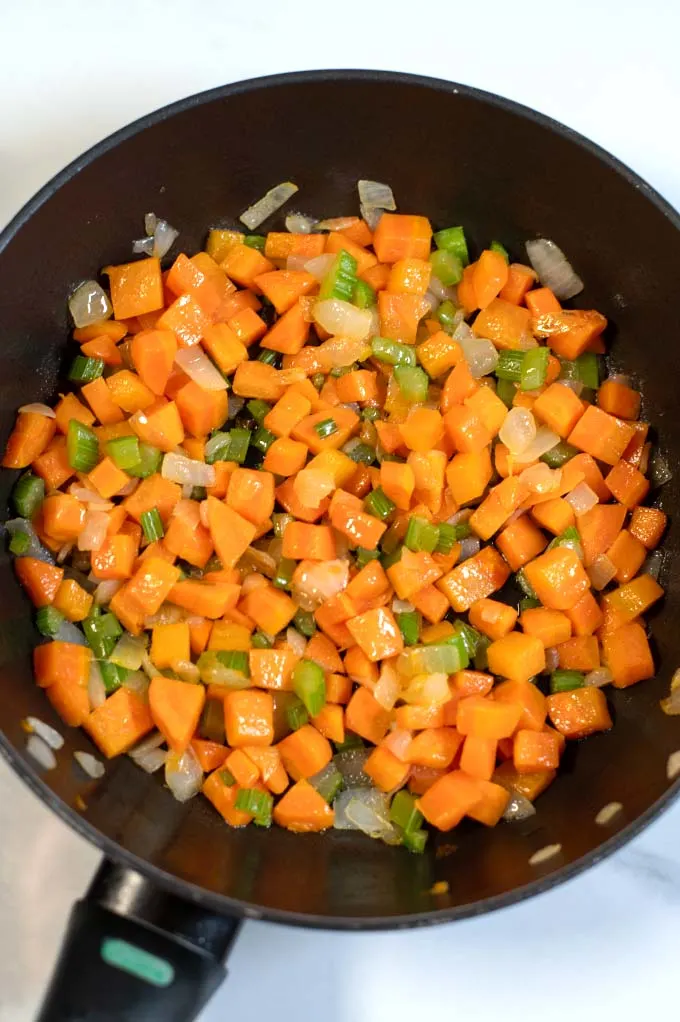 Italian sofrito (or soffritto) is a classic aromatic base used to build deep flavor in countless dishes, from soups to sauces. Made with finely chopped onions, carrots, and celery, it is gently sautéed in olive oil until tender and fragrant. This simple yet essential mixture lays the foundation for many traditional Italian recipes, adding richness and complexity. #contentednesscooking”>
Italian sofrito (or soffritto) is a classic aromatic base used to build deep flavor in countless dishes, from soups to sauces. Made with finely chopped onions, carrots, and celery, it is gently sautéed in olive oil until tender and fragrant. This simple yet essential mixture lays the foundation for many traditional Italian recipes, adding richness and complexity. #contentednesscooking”>
What is the difference between Sofrito and Soffritto?
The difference between sofrito and soffritto is based on language and regional cuisine:
Sofrito is a term used in *Spanish and Latin American cooking. It’s a base made of ingredients like garlic, onions, tomatoes, peppers, and sometimes herbs like cilantro, sautéed in oil to develop flavors for a variety of dishes.
Soffritto is the Italian version of a similar technique, typically made with finely chopped onions, carrots, and celery sautéed in olive oil. It serves as the flavor base for many Italian dishes such as risottos, sauces, and soups.
Despite the different names and slight variations in ingredients, both terms refer to a similar cooking method involving aromatic ingredients as a base for flavorful dishes.
What ingredients are needed?
In Italian sofrito, each ingredient plays a crucial role in developing its distinctive flavor:
Onions provide sweetness and depth, caramelizing slightly as they cook to bring out their natural sugars, forming the backbone of the soffritto’s flavor profile.
Celery adds a mild, slightly peppery taste and a subtle herbaceous quality, balancing the sweetness of the onion and carrot while introducing a fresh, green note.
Carrot lends a gentle sweetness and vibrant color, enriching the soffritto with a natural balance that complements heartier ingredients in the final dish.
Olive oil acts as the cooking medium, enhancing the flavor of the vegetables while imparting its own fruity, rich undertones, essential for developing the soffritto’s smooth texture.
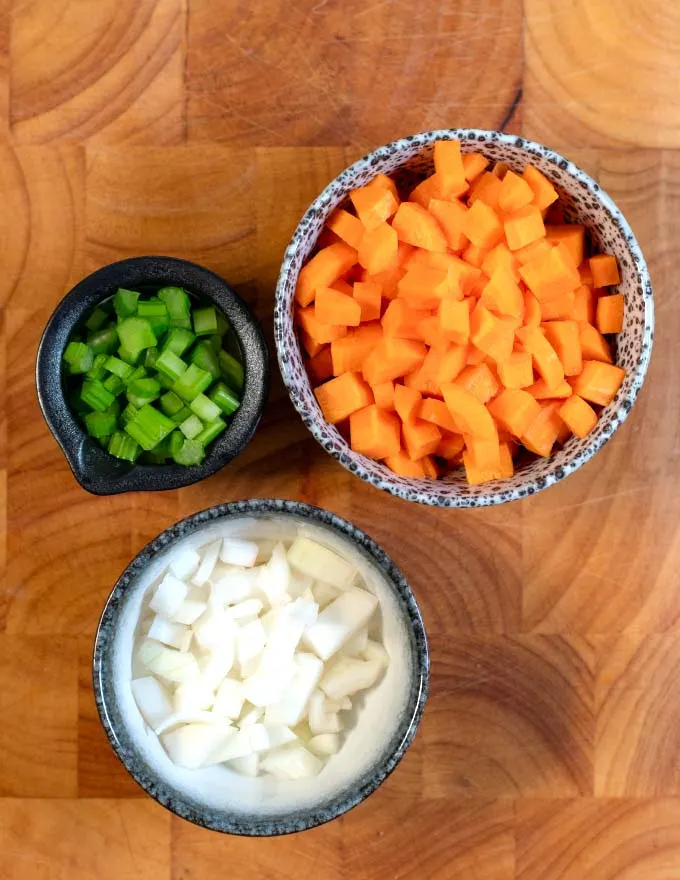 Italian sofrito (or soffritto) is a classic aromatic base used to build deep flavor in countless dishes, from soups to sauces. Made with finely chopped onions, carrots, and celery, it is gently sautéed in olive oil until tender and fragrant. This simple yet essential mixture lays the foundation for many traditional Italian recipes, adding richness and complexity. #contentednesscooking”>
Italian sofrito (or soffritto) is a classic aromatic base used to build deep flavor in countless dishes, from soups to sauces. Made with finely chopped onions, carrots, and celery, it is gently sautéed in olive oil until tender and fragrant. This simple yet essential mixture lays the foundation for many traditional Italian recipes, adding richness and complexity. #contentednesscooking”>
What are the different types of celery?
There are several different types of celery, each with unique characteristics:
- Pascal Celery: This is the most common variety found in supermarkets, known for its thick, crisp stalks and mild flavor. It’s typically used in cooking, salads, and as a snack.
- Leaf Celery (Chinese Celery): This variety has thinner stalks and more pronounced, aromatic leaves. It’s often used in Asian cuisines for its stronger flavor, which is more intense than Pascal celery.
- Celeriac (Celery Root): Grown primarily for its edible root, celeriac has a mild, nutty flavor similar to celery but with an earthier taste. It is often used in soups, stews, or mashed.
- Wild Celery (Smallage): A more bitter and herbaceous type, wild celery has slender, tough stalks and is usually grown for its leaves and seeds, which are used as an herb in cooking.
Each variety can serve different purposes, from flavoring dishes to acting as a primary ingredient.
Does it matter which celery to use for Italian Sofrito?
For sofrito, it’s best to use Pascal celery, the common variety with thick, mild stalks.
Its subtle flavor balances well with the onions and carrots, without overpowering the other ingredients. While you could use leaf celery or wild celery, their stronger, more intense flavors may alter the traditional taste of soffritto.
Celeriac, being a root vegetable, wouldn’t be suitable for soffritto, as it’s more starchy and has a different texture. Stick to Pascal celery for the classic Italian soffritto flavor!
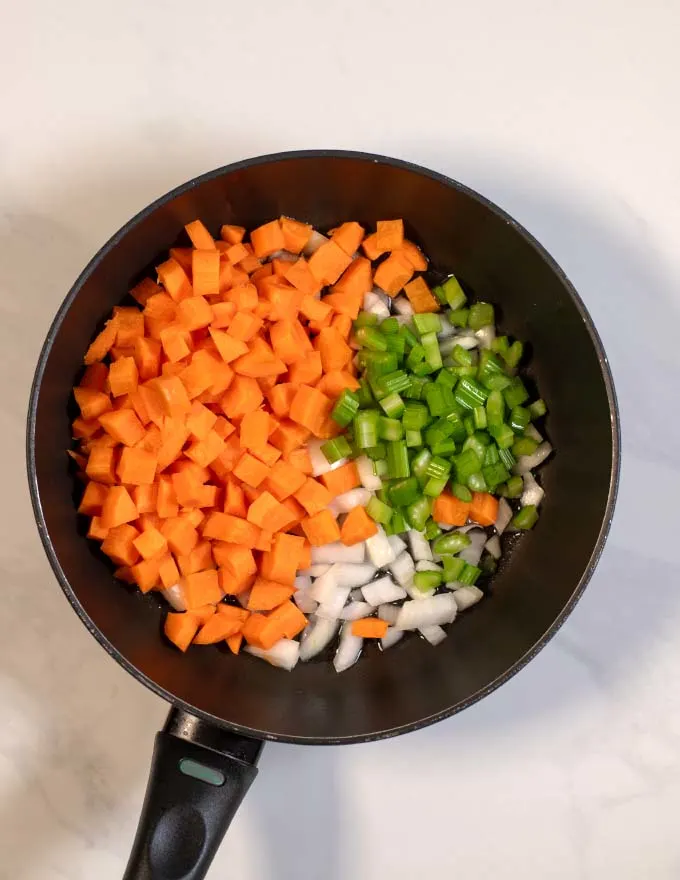 Italian sofrito (or soffritto) is a classic aromatic base used to build deep flavor in countless dishes, from soups to sauces. Made with finely chopped onions, carrots, and celery, it is gently sautéed in olive oil until tender and fragrant. This simple yet essential mixture lays the foundation for many traditional Italian recipes, adding richness and complexity. #contentednesscooking”>
Italian sofrito (or soffritto) is a classic aromatic base used to build deep flavor in countless dishes, from soups to sauces. Made with finely chopped onions, carrots, and celery, it is gently sautéed in olive oil until tender and fragrant. This simple yet essential mixture lays the foundation for many traditional Italian recipes, adding richness and complexity. #contentednesscooking”>
How to make Italian Sofrito?
Get a frying pan ready and heat the olive oil.
Make sure that the carrots, celery, and onions are cut into similar-sized cubes. Then, give them into the pan and fry them on high for 2 minutes.
Reduce the heat to medium high and keep cooking the soffritto for about 15 minutes until all is softened.
Now, your Italian Sofrito is ready to be used.
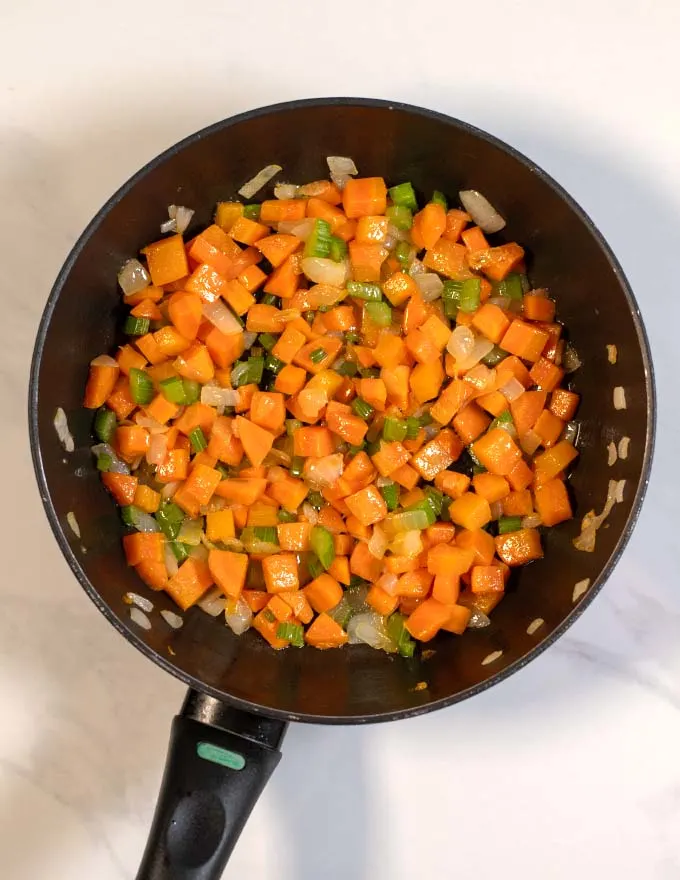 Italian sofrito (or soffritto) is a classic aromatic base used to build deep flavor in countless dishes, from soups to sauces. Made with finely chopped onions, carrots, and celery, it is gently sautéed in olive oil until tender and fragrant. This simple yet essential mixture lays the foundation for many traditional Italian recipes, adding richness and complexity. #contentednesscooking”>
Italian sofrito (or soffritto) is a classic aromatic base used to build deep flavor in countless dishes, from soups to sauces. Made with finely chopped onions, carrots, and celery, it is gently sautéed in olive oil until tender and fragrant. This simple yet essential mixture lays the foundation for many traditional Italian recipes, adding richness and complexity. #contentednesscooking”>
How to use Italian Sofrito?
Soffritto is a versatile base used to add depth and flavor to many Italian dishes. Here’s how you can use it:
- Sauces: Start your tomato or meat sauces by cooking soffritto first, which will infuse the sauce with a rich, aromatic flavor.
- Soups and Stews: Add soffritto as the base for soups like minestrone or brodo, giving the dish a flavorful foundation that develops further as it simmers.
- Risotto: Begin by cooking the soffritto before adding rice and broth to create a risotto with a deep, savory taste.
In all cases, soffritto is gently sautéed in olive oil until softened and fragrant, then other ingredients are added on top to build the rest of the dish.
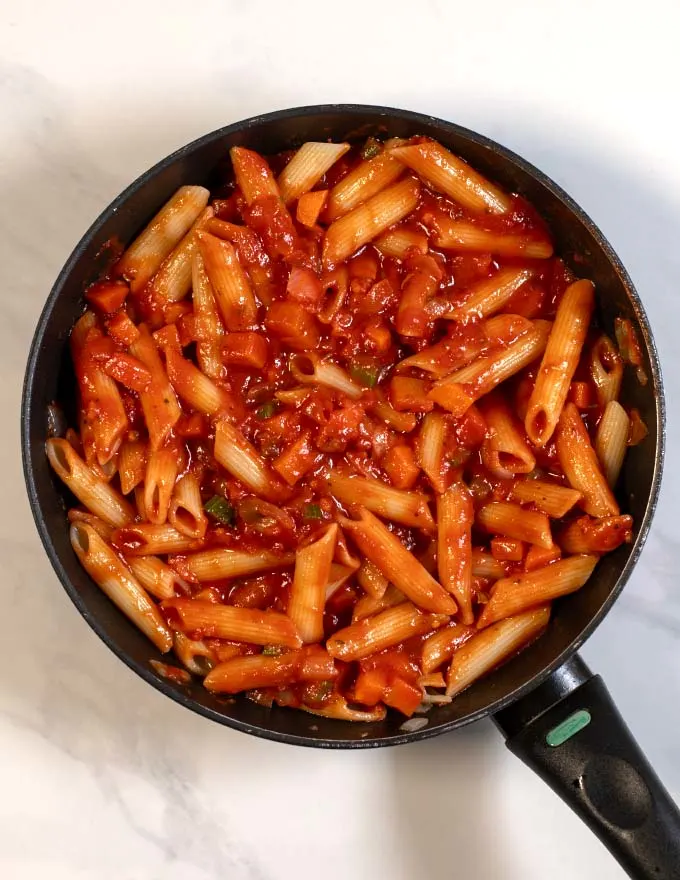 Italian sofrito (or soffritto) is a classic aromatic base used to build deep flavor in countless dishes, from soups to sauces. Made with finely chopped onions, carrots, and celery, it is gently sautéed in olive oil until tender and fragrant. This simple yet essential mixture lays the foundation for many traditional Italian recipes, adding richness and complexity. #contentednesscooking”>
Italian sofrito (or soffritto) is a classic aromatic base used to build deep flavor in countless dishes, from soups to sauces. Made with finely chopped onions, carrots, and celery, it is gently sautéed in olive oil until tender and fragrant. This simple yet essential mixture lays the foundation for many traditional Italian recipes, adding richness and complexity. #contentednesscooking”>
What can I do with leftovers?
Leftover Italian Sofrito can be used in a variety of ways to enhance future meals:
Freeze for Later: Portion the leftover soffritto into small containers or ice cube trays and freeze it. You can then add it to sauces, soups, or stews whenever you need a flavor boost.
Add to Stir-Fries or Roasts: Stir the soffritto into a vegetable stir-fry or toss it with roasted vegetables or meats for added flavor.
Incorporate into Grains: Mix soffritto into cooked grains like rice, quinoa, or couscous for a quick and flavorful side dish.
These methods prevent waste and let you quickly infuse future dishes with a rich, savory foundation.
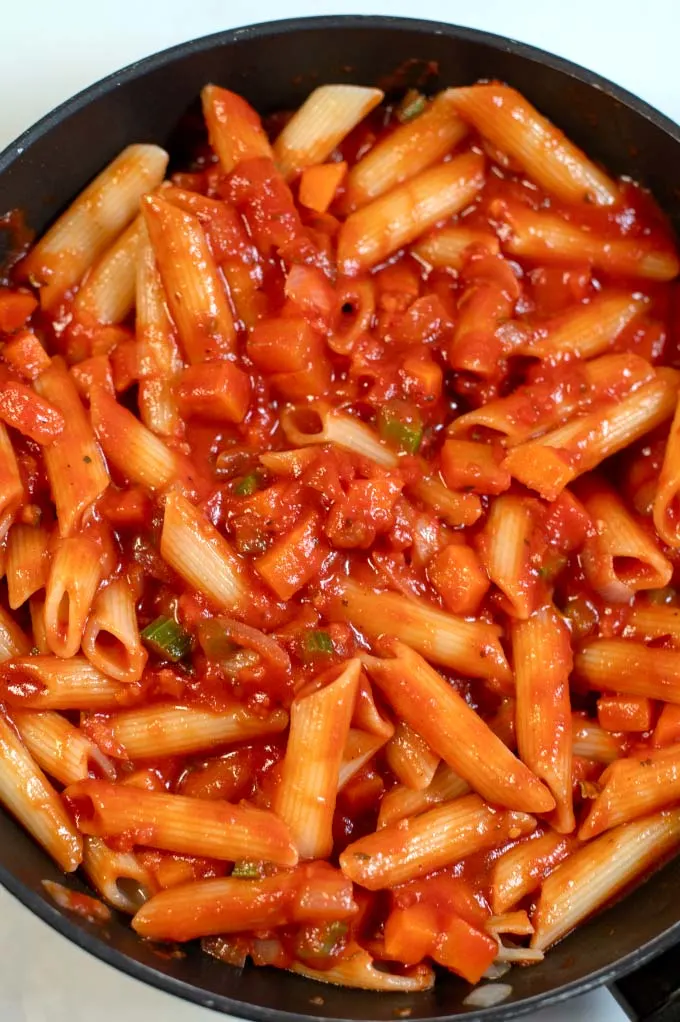 Italian sofrito (or soffritto) is a classic aromatic base used to build deep flavor in countless dishes, from soups to sauces. Made with finely chopped onions, carrots, and celery, it is gently sautéed in olive oil until tender and fragrant. This simple yet essential mixture lays the foundation for many traditional Italian recipes, adding richness and complexity. #contentednesscooking”>
Italian sofrito (or soffritto) is a classic aromatic base used to build deep flavor in countless dishes, from soups to sauces. Made with finely chopped onions, carrots, and celery, it is gently sautéed in olive oil until tender and fragrant. This simple yet essential mixture lays the foundation for many traditional Italian recipes, adding richness and complexity. #contentednesscooking”>
Other sauce recipes to try
- Pizza Sauce
- Spaghetti Sauce
- Easy Empanada Sauce Recipe for Dipping
- Quick Diavolo Sauce Recipe [spicy, vegan, easy]
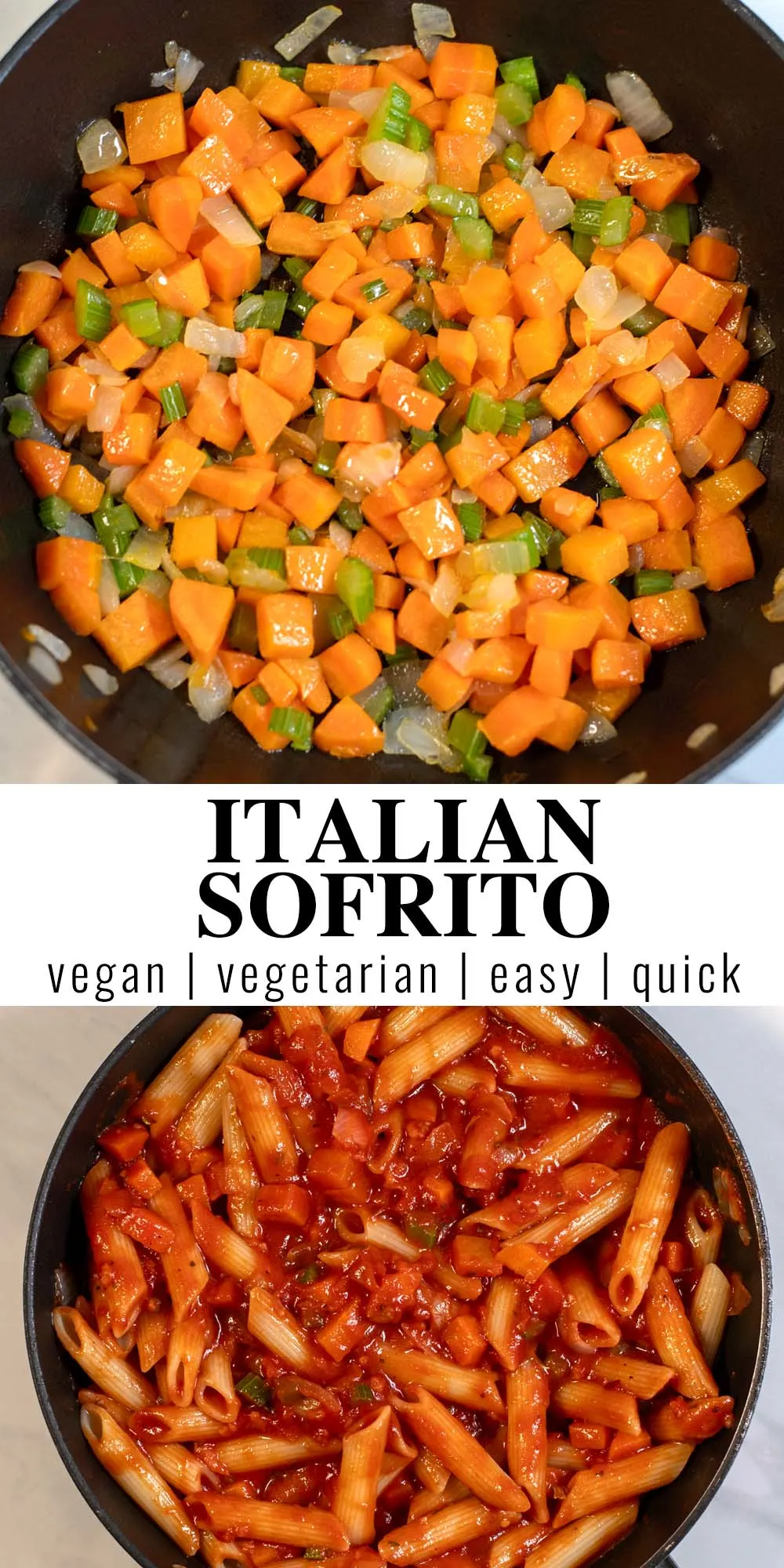 Italian sofrito (or soffritto) is a classic aromatic base used to build deep flavor in countless dishes, from soups to sauces. Made with finely chopped onions, carrots, and celery, it is gently sautéed in olive oil until tender and fragrant. This simple yet essential mixture lays the foundation for many traditional Italian recipes, adding richness and complexity. #contentednesscooking”>
Italian sofrito (or soffritto) is a classic aromatic base used to build deep flavor in countless dishes, from soups to sauces. Made with finely chopped onions, carrots, and celery, it is gently sautéed in olive oil until tender and fragrant. This simple yet essential mixture lays the foundation for many traditional Italian recipes, adding richness and complexity. #contentednesscooking”>
I hope this classic Italian soffritto recipe becomes a staple in your kitchen, adding depth and flavor to your favorite dishes!
If you enjoyed making it, I’d love to hear your thoughts—please leave a comment and a star rating below.
Don’t forget to snap a photo of your creation and share it on Instagram or Facebook, tagging me so I can celebrate your delicious success!
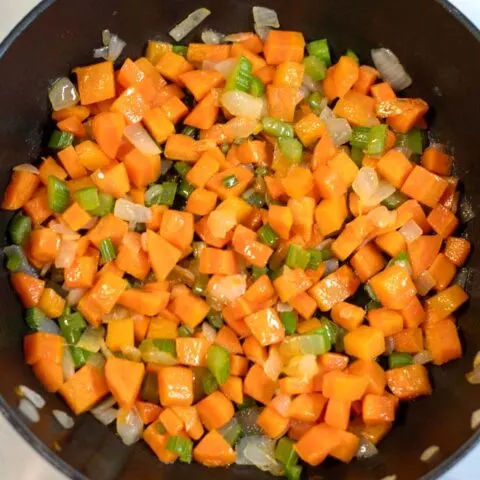
Italian Sofrito
Italian sofrito (or soffritto) is a classic aromatic base used to build deep flavor in countless dishes, from soups to sauces. Made with finely chopped onions, carrots, and celery, it is gently sautéed in olive oil until tender and fragrant. This simple yet essential mixture lays the foundation for many traditional Italian recipes, adding richness and complexity.
Ingredients
- 1 medium onion, diced
- 2 tbsp olive oil
- 2 celery stalks, diced
- 1 large carrot, diced
Instructions
- Get a frying pan ready and heat the olive oil.

- Make sure that the carrots, celery, and onions are cut into similar-sized cubes. Then, give them into the pan and fry them on high for 2 minutes.

- Reduce the heat to medium high and keep cooking the soffritto for about 15 minutes until all is softened.

- Now, your Italian Sofrito is ready to be used.

Nutrition Information:
Yield: 1 Serving Size: 1 batchAmount Per Serving: Calories: 309Total Fat: 12gSaturated Fat: 4gTrans Fat: 0gUnsaturated Fat: 6gCholesterol: 0mgSodium: 95mgCarbohydrates: 16gFiber: 4gSugar: 5gProtein: 2g
